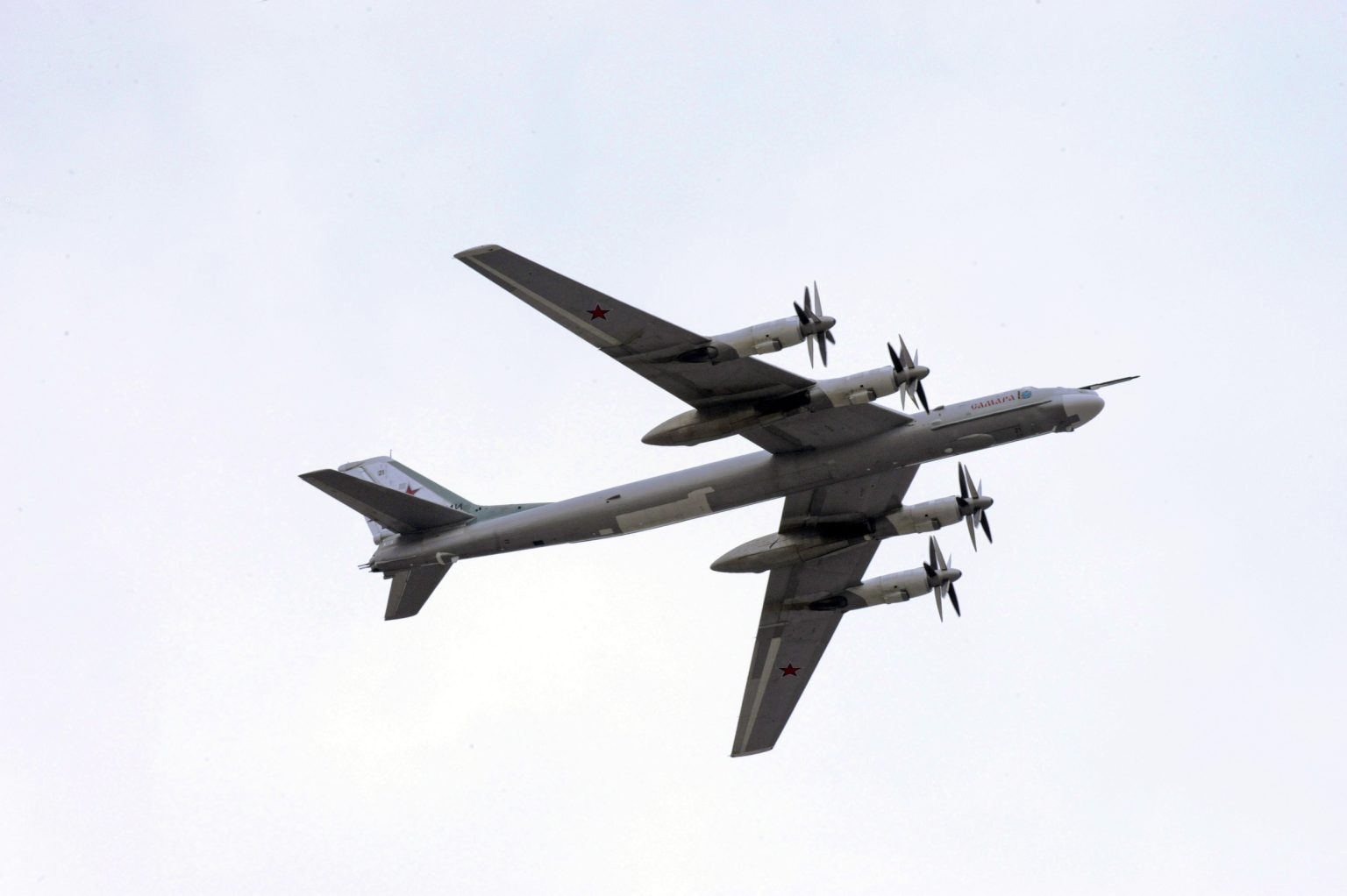Two Russian nuclear bombers recently carried out long-range sorties near the borders of Japan and South Korea, sparking concerns in the region. The Japanese Defense Ministry reported that the Tu-95 strategic bombers, accompanied by unidentified fighter escorts, flew in contested waters on April 2. The Sea of Japan, known as the East Sea by both North and South Korea, is home to Russia’s Pacific Fleet and has recently seen increased military activity. Japan scrambled interceptor aircraft in response, but the Russian planes remained within international airspace, conducting maneuvers possibly related to ongoing drills in the region.
The Tu-95 bomber, a Soviet-designed aircraft capable of carrying nuclear warheads, has been in service since the mid-1950s. The recent flights near Japan mark the latest in a series of military exercises by Russia in the region. In December, Russian Tu-95s conducted joint drills with Chinese H-6 bombers, sparking concerns among the United States and its allies. China has also been increasing its military presence in the Sea of Japan, with a Chinese spy drone flying a circular route in the area last month. Both Russia and China have been conducting military exercises near Japan, raising tensions in the region.
Japan regularly updates on the movements of Russian and Chinese forces near its borders, including the recent sightings of the WZ-7 Chinese reconnaissance drone and the Russian Vishnya-class intelligence-gathering ship the Kareliya. The Chinese drone flew a circular route over the Sea of Japan, using airspace possibly belonging to North Korea or Russia. The Japanese Joint Staff also observed the movements of the Chinese navy’s Type 815A electronic surveillance ship the Jinxing. These activities highlight the increased military presence of Russia and China in the region, prompting concerns about potential security threats.
As tensions rise in the Sea of Japan, Japan remains vigilant in monitoring the movements of Russian and Chinese military assets near its borders. Recent activities by Russian nuclear bombers and Chinese surveillance drones indicate a growing militarization of the region, raising concerns among Japan, South Korea, and other neighboring countries. While the flights may have been conducted within international airspace, the increased military drills and exercises by Russia and China near Japan pose a potential security risk and require continued surveillance and monitoring by Japanese defense forces.
The recent sorties by Russian nuclear bombers near Japan mark the latest in a series of military activities in the region, including joint exercises with China. The presence of advanced military aircraft and surveillance drones further escalates tensions and raises concerns about potential security threats. Japan, along with its allies, continues to closely monitor the movements of Russian and Chinese military assets near its territory, emphasizing the need for enhanced defense capabilities and cooperation to ensure regional stability and security. As Russia and China assert their military presence in the Sea of Japan, the strategic implications for Japan and its neighbors become increasingly significant.
In response to the growing military activities by Russia and China near its borders, Japan has scrambled interceptor aircraft and published regular updates on the movements of foreign forces in the region. The presence of nuclear-capable bombers, reconnaissance drones, and surveillance ships highlights the complex security dynamics in the Sea of Japan and the need for enhanced cooperation among regional allies. As tensions persist and military exercises continue, Japan remains vigilant in safeguarding its territorial integrity and ensuring the security of the region against potential threats posed by Russia and China’s increasing militarization efforts.


